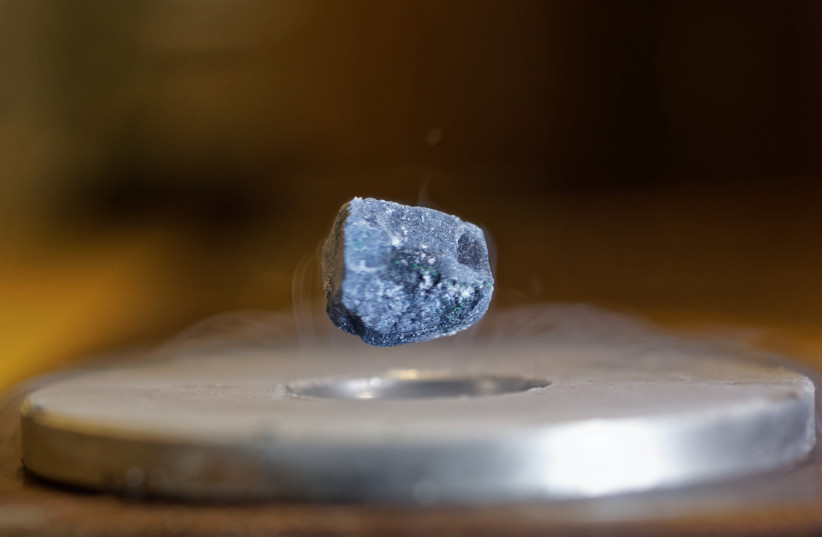The 'demon particle': Have scientists discovered the impossible? - study
Massless, invisible demon quasiparticles may help scientists better understand how superconductivity works.
Physicists have discovered a transparent, massless, and neutral "demon" particle that could help scientists understand superconductors better, according to a new study by researchers from the University of Illinois Urbana-Champaign.
The study, published in the journal Nature on Wednesday, focused on the search for a particle first theorized by physicist David Pines in 1956.
In solids, electrons act erratically, combining into collective units. If enough energy is input, the electrons can form plasmons - waves that act somewhat like a particle (also known as a quasiparticle) - if enough energy is input, although usually, the mass of solids is too large for plasmons (units of plasma, also theorized by Pines along with David Bohm in 1952) to form at room temperature.
Demon particles, which can also be conceptualized as waves, would be different. Since they're massless, they can form with any energy and, therefore, at any temperature.
Pines theorized that electrons in a solid would be able to combine to form two plasmons which would then fall out of phase with each other in such a way that the peaks of one plasmon's waves would coincide with the valleys of the other plasmon's waves. This new quasiparticle would be massless, neutral, and would not interact with light. Pines referred to this theoretical particle as a "demon."

The issue is that most studies on electrons use light, which would prevent them from detecting a demon particle as it does not interact with light.
“The vast majority of experiments are done with light and measure optical properties, but being electrically neutral means that demons don’t interact with light,” said Peter Abbamonte, a professor of physics at the University of Illinois Urbana-Champaign and lead author of the study in a press release. “A completely different kind of experiment was needed.”
A happy demonic accident
Abbamonte and his team happened upon the demon quasiparticle somewhat by accident. The team was studying the electronic properties of a material called strontium ruthenate (Sr2RuO4) because it is similar to high-temperature superconductors and yet isn't one.
A research group led by Yoshi Maeno, a professor of physics at Kyoto University, synthesized high-quality samples of the metal for Abbamonte's team which examined the samples with momentum-resolved electron energy-loss spectroscopy.
This method of examination uses energy from electrons shot into the metal to directly observe the metal's features, including plasmons. While looking through the data they had collected, the researchers found something unexpected: an electronic mode without no mass.
“At first, we had no idea what it was," said former graduate student Ali Husain, co-author of the study. "Demons are not in the mainstream. The possibility came up early on, and we basically laughed it off. But, as we started ruling things out, we started to suspect that we had really found the demon.”
Edwin Huang, a Moore Postdoctoral Scholar at the University of Illinois Urbana-Champaign, explained in a press release that the team had to perform a microscopic calculation in order to understand what was happening. "When we did this, we found a particle consisting of two electron bands oscillating out-of-phase with nearly equal magnitude, just like Pines described.”
Abbamonte noted that it wasn't necessarily surprising that his team found something new by using a new method of measurement. “It speaks to the importance of just measuring stuff. Most big discoveries are not planned. You go look somewhere new and see what’s there.”
The authors of the study noted that demon quasiparticles have been conjectured to mediate superconductivity. The researchers added that further research is needed using alternative methods of observation in order to fully understand how the quasiparticle functions.



No comments:
Post a Comment